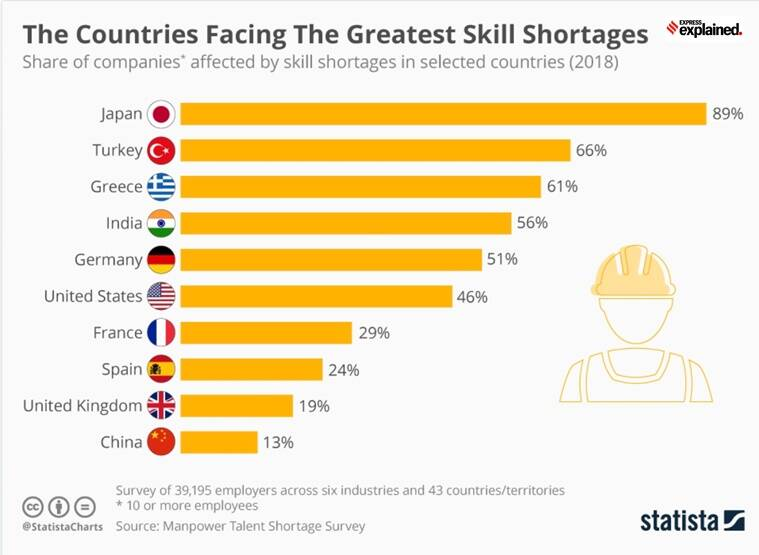The challenge of skilling India
Why in the news?
- Recently, on the occasion of the World Youth Skills Day, Prime Minister underscored the importance of a skilled workforce for achieving the goal of becoming Atmanirbhar Bharat.
- He referred to the schemes and programmes run by his administration – such as the Skill India Mission and the ‘Going Online As Leaders’ (or Goal) etc – to argue that India had laid the foundation for improving the level of skill among the youth.
Skilling Challenges:
-
- On the one hand, companies in India face an acute shortage of skilled manpower and, on the other, India has millions of educated unemployed.
- At over 19% unemployment rate, one in every five Indian who graduate (or even better) is unemployed.
- According to the 2018 report by the National Council of Applied Economic Research (NCAER), India had about 468 million people in its workforce.
- Around 92% of them were in the informal sector. Around 31% were illiterate, only 13% had a primary education, and only 6% were college graduates.
- Further, only about 2% of the workforce had formal vocational training, and only 9% had non-formal, vocational training.
- It is estimated that almost 1.25 million new workers (aged 15–29) were projected to join India’s workforce “every month” through 2022.

- A big part of the trouble is the starting condition. Over 90% of India’s workforce is in the informal sector.
- According to researchers at the NCAER, India is trapped in a vicious cycle: Greater workforce informality leads to lower incentives to acquire new skills.
- Faced with inadequately skilled workers, businesses often choose replacing labour with machinery.
- That’s because “skilled labour and technology are complementary, but unskilled labour and technology are substitutes”. This, in turn, leads to still fewer formal jobs.
- Millions of Indians who work in agriculture continue to subsist because they do not have the skills to take up industrial or services sector jobs even as these sectors themselves have failed to create adequate job opportunities.
What can be done to break this cycle?
- A distinct disadvantage with India’s approach towards skilling has been to ignore the demands of the market.
- For the most part, skills have been provided in a top down fashion. Thus, most skilling efforts focus almost solely on providing certain skills but fail to “match” them with the needs of the market.
Reference:
- https://indianexpress.com/article/explained/explainspeaking-the-challenge-of-skilling-india-7411258/
Subscribe
Login
0 Comments
